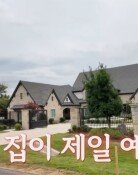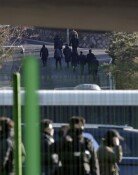Chinese embassy in cacophony with surroundings
Chinese embassy in cacophony with surroundings
Posted January. 25, 2014 05:50,
The Qing Dynasty had no idea about diplomacy. All it knew about diplomacy was taking tributes from surrounding countries in the frontier and doling out grants. Then, it took a beating from Britain with the Opium War, being dragged out to the international arena for modern diplomatic relations. After signing one treaty after another with Western powers, Beijing signed a trade agreement with Joseon in 1882. Under the treaty, Qing dispatched a consul-level diplomat to Seoul. His official residence was built on what is now the Chinese embassy in Myeong-dong, downtown Seoul.
Yuan Shikai, one of the most influential general and politician in the twilight of Qing, solidified his political footing in Joseon. In his 20s, he led an army of Qing troops to Joseon in 1884 to suppress a coup backed by Japan and then took office as successor to the diplomat. As he held sway over Joseon, Western diplomats called him "governor." Yuan brought down his predecessor`s official residence and built a new one, where stayed for 10 years. Chinese guards at the residence acted so high-handedly toward Koreans that there were few passers-by in front of the building even in broad daylight.
The new Chinese embassy building has been completed, with an opening ceremony held Thursday. It was an event that deserved congratulations and celebrations. The embassy complex consists of two buildings one for official business and the other for Chinese diplomats` residences. In an area with low-lying buildings, the high-riser looks very intimidating. As a foreign embassy, the building was exempt from Seoul`s construction regulations. In addition, traditional Chinese tiled roof on top of the modern building could look cacophonic to some people.
The Chinese embassy in Paris, France is housed in an old traditional stone building, while the one in London, England has an exterior of typical British brick architecture. The Chinese embassy in Berlin, Germany was built after Germany relocated the capital from Bonn but the building is a typical Berlin-style structure. The Chinese embassy in Tokyo, Japan is in an ordinary Japanese office building. The Chinese embassy in Washington D.C. looks refined as it housed in an exposed concrete building. The Chinese embassy in Seoul looks domineering in its height and exterior, a reminder of Yuan Shikai in the late 19th century.
Editorial Writer Song Pyeong-in (pisong@donga.com)







